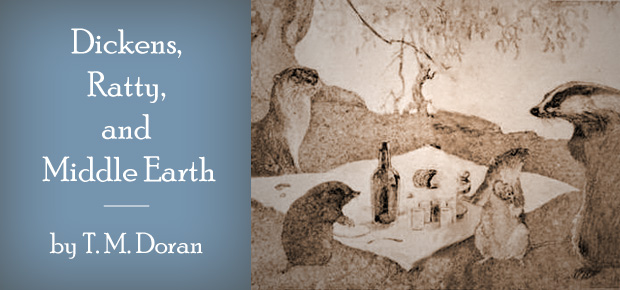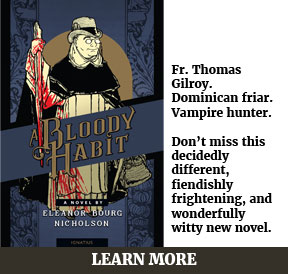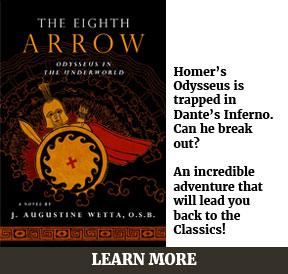
Many who have read and treasured The Hobbit and The Lord of the Rings have insisted that no other story has had a comparable effect on them. People point to other literary myths and fantasy stories that have been enjoyable reads, but which pale in comparison to Tolkien’s masterpiece.
Such observations seem to suggest that The Hobbit and The Lord of the Rings came out of nowhere, but the truth is that no story comes out of nowhere; every story is derivative of other stories in one sense or another. J. R. R. Tolkien himself pointed to many influences, including the epic myths, and medieval stories and legends.
It’s important to separate such creative derivations from pastiche and mere copycats. How many stories written since The Lord of the Rings could be put in these categories?
Writers derive consciously and unconsciously. Tolkien was able to derive ideas, themes, settings, etc., from other stories while infusing them with originality and new beauty, or new menace. He made big myths (Atlantis among them) small enough to put readers inside them, immersing us in the “then and there”, and he made smaller fairy tales like “Jack the Giant Killer”, and children’s nursery rhymes like “The Man in The Moon” bigger and denser. He made use of well-known mythological races and creatures: dwarves, trolls, goblins, dragons, giants, wights, and werewolves, but added his own creatures to the canon: hobbits, newly imagined elves, ents, and balrogs too. Tolkien went even further, giving us the origins and natures of many of these races and creatures.
One story from which bits and pieces of The Hobbit and The Lord of the Rings might have been derived is Kenneth Grahame’s The Wind in the Willows. Others, including C. S. Lewis, have suggested that The Wind in the Willows influenced Tolkien’s storytelling. The Rat’s, Mole’s, and Badger’s homes convey the same sense of comfort and conviviality as Bilbo’s hobbit hole and Tom Bombadil’s house, and the Rat, Mole, and Badger “feel” like hobbits, or vice versa. The Weblog of Wayne G. Hammond & Christina Scull posted this Tolkien quote:
“Except for the character of Mr. Toad…the animals in The Wind in the Willows live enchanting lives by the River-bank and have enchanting adventures. Some of the chapters come very close to prose poems, for example ‘Dulce Donum’, where the Mole emotionally rediscovers his old home, ‘Wayfarers All’ where the Rat longs to go adventuring…”
Isn’t there a keen sense of longing for home in The Hobbit and The Lord of the Rings, along with a yearning for adventure in the persons of Bilbo and Frodo; even Sam? I see hints of Grahame’s “The Piper at the Edge of Dawn” in “In The House of Tom Bombadil”. Though there are thematic differences, both chapters include verse, song, powerful mystical characters, transcendent beauty, and succor from peril. Even the chapter titles are phonologically similar, with both having a total of eight syllables.
In Dickens’ Our Mutual Friend, there is an queer couple, Sophronia and Alfred Lammle, who live on Sackville Street, and whose venality and small-mindedness immediately reminded me of Lobelia and Lotho, the Sackville-Bagginses who are consumed with possessing Bag End. Dickens’ story could not be more different than The Lord of the Rings, but this doesn’t mean that Tolkien wasn’t capable of deriving something from that story to enhance his own story. Easy to succumb to the temptation to take these comparisons too far but it’s fun to speculate, and to wonder.
Great stories, including literary myths like The Lord of the Rings, The Wind in the Willows, and, I would add, Watership Down, utilize derived material in such a way as to breathe new life into these derivations. Even when culture, environment, history, are not explored in great detail, the reader has the sense that he is sailing in deep waters rather than shallow waters, that there is much below the surface, an important element of the genius of Tolkien and other great writers.






Gregory C. Benoit
March 12, 2014 at 4:16 pm
I agree with your basic tenet, but it’s also important to remember that some themes are themselves universal to the human spirit and experience. Greed, for example, can be found thematically throughout literature, and it might be stretching things a bit to suggest that Tolkien drew his characters from Dickens simply because of their covetousness. Tolkien and Lewis would have drawn this distinction themselves.
T. M. Doran
March 12, 2014 at 5:05 pm
So true, Gregory. Even if Tolkien’s characters was inspired by these characters, they were no mere copies.
Gail Finke
March 12, 2014 at 6:45 pm
Interesting. I don’t know whether I’d say thigns were derived from TWITW though, or whether it shows that Tolkien had a similar sensibility. As a child I loved that book, not just for the funny parts but for the extremely sad and longing parts. They made me FEEL something that seemed so big and grown-up and real…
Caroline Niesley
March 14, 2014 at 2:31 pm
Please post more articles like these!
Is Bill Gates Insane by Karl Keating of Catholic Answers - Big Pulpit
March 17, 2014 at 2:16 pm
[…] Royal PhD, The Catholic Thing Lent with St. Mary Magdalene – Haley Stewart, Catholic Exchange Dickens, Ratty & Middle Earth – T. M. Doran, I. P. Novels The Purpose of Life – Don DeMarco PhD, Truth and Charity […]
Bill
April 2, 2019 at 3:09 pm
The Hobbit has long been one of my favorite books. As I reread TWatW recently, I couldn’t escape the similarities between the characters and their love for the comforts of their underground homes.